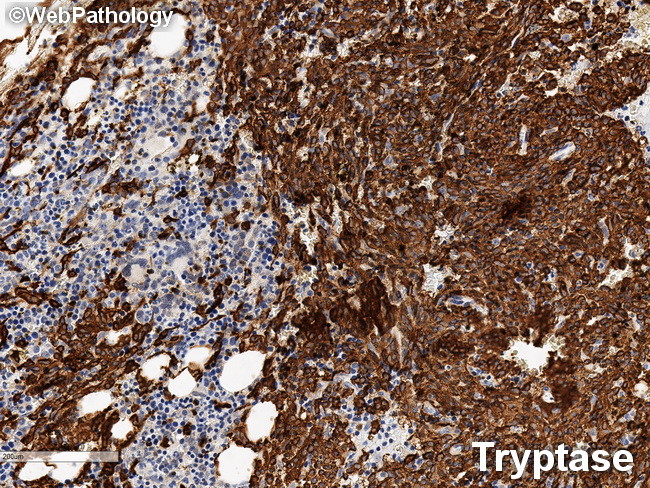Systemic Mastocytosis : Bone Marrow - Tryptase


Comments:
Immunohistochemistry of Mastocytosis: As described previously, mast cells express CD33, CD5, CD68, KIT/CD117, tryptase (shown here) and chymase. CD117 is highly sensitive but less specific marker for mast cells. Chymase is highly specific but not as sensitive. Neoplastic mast cells show aberrant expression of CD25 and/or CD2. This is helpful in differentiating them from normal mast cells when the infiltrate is sparse or subtle. CD2 is more readily detected by flow cytometry. More recently CD30 has also been established as a novel aberrant marker for neoplastic mast cells especially in advanced systemic mastocytosis. Mast cells don't express most B- and T-cell markers and are negative for myelomonocytic markers CD14, CD15, and CD16. Tryptase is granular and cytoplasmic while CD117 is annular, membrane associated. Co-expression of tryptase and CD117 distinguishes MCs (positive for both) from basophils (weak positivity for tryptase; negative for CD117). CD25 is most helpful when used in bone marrow biopsies. This image shows a compact mast infiltrate in the right half and an area of normal hematopoiesis in the left half.



